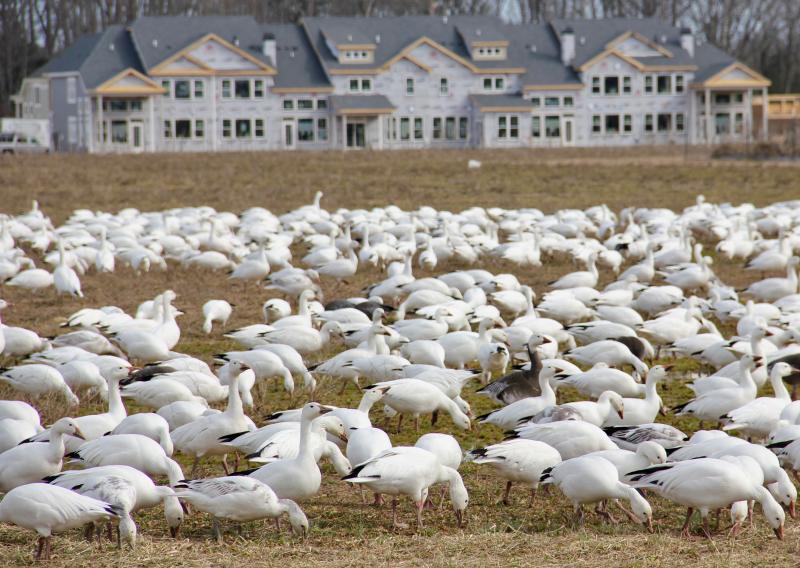Reasons why duck, goose numbers are down this year
This falls into the category where any attempt at humor – as long as it isn’t hurtful to others – has merit because you're trying to make people laugh, and laughter feels almost as good as sunshine on a cloudy day.
So, two guys are sitting in a hunting blind watching a flock of geese fly over, way too high to take a shot at except for the proverbial skybusters.
“Did you ever notice that geese fly in V-shaped formations?” asks one of the guys.
“Yes, I’ve noticed that.”
“And have you ever noticed that usually one side of the V-formation is longer than the other side?”
“Yes, I’ve noticed that too.”
“Do you know why that is?”
The other guy, still watching the geese fly over, tips his hat back on his forehead and scratches his scalp a little as he ponders the question.
“I guess I really don’t why that is,” he finally says. “Do you know why?”
“Yes, I do,” says the other guy. “It’s because there are more geese on one side of the V than on the other.”
That story came to mind because the general sense from many observers is there are fewer ducks and geese around this winter than we’ve seen in past years. And why does it seem that way? Because according to waterfowl experts who study populations, actual numbers are down this year, especially when it comes to geese.
According to federal statistics, the total number of ducks in North America this year – 39 million – is down 6 percent from 2018. That total is 10 percent higher than the long-term average, but still down from last year.
Of that total, 9.4 million are mallards, and about 1 million of those are in the Atlantic flyway where we are located. Black duck numbers in the Atlantic Flyway, at about 600,000, are actually up above numbers in the past couple of decades.
Those two duck statistics are the reason why Delaware hunters had their limit of mallards cut this year, and why the black duck limit has doubled in the last couple of years from the longtime one-bird limit to the current limit of two.
The Canada goose daily harvest limit was also lowered this year to a one-bird daily limit. That’s because the estimated number of breeding pairs of Canadas, which stood at more than 200,000 in 2012, has now dropped below 150,000 and is expected to stay there for the 2020 breeding season.
As for snow geese, the total population we’re seeing in the Atlantic flyway has dropped from a high of about 1 million to an estimated 700,000 now.
Canada geese in the Atlantic flyway winter between New England and South Carolina, with the greatest year-in and year-out concentration on the Delmarva Peninsula.
Then there’s the weather. While actual numbers are down, the biggest reason we’re seeing fewer numbers of ducks and geese so far this winter is because of the abnormally warm winter we’re experiencing.
When warmer weather doesn’t freeze the ponds and waterways up north, ducks and geese that typically winter there don’t get pushed down to us. Veteran local duck hunter Kenny Hopkins has a number of ponds located on the farm where he lives bordering the Great Marsh. “I have open fresh water there and plenty of food planted for the ducks – but very few ducks. They just don’t need to come down this far when it’s this warm.”
Hopkins also noted changes at Prime Hook National Wildlife Refuge that have impacted local waterfowl numbers. “The refuge used to be managed for waterfowl. They had grain fields where geese came in the winter and freshwater marshes where ducks would come for food and rest. Now they’re all gone.”
Still, all is not lost. Readers may not be seeing as many flocks of geese, but at least when they do, they now know why one side of those V formations is longer than the other.
























































